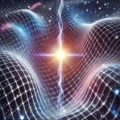Understanding Telescopes: From Galileo to the Webb Era
Purpose
A telescope is an optical instrument designed to observe distant objects by collecting and magnifying electromagnetic radiation, most commonly visible light. It allows scientists and observers to study celestial bodies and other remote phenomena with enhanced clarity and detail.
Operational Principle
Telescopes operate by gathering light through an objective (lens or mirror), focusing it to form an image, and then magnifying that image through an eyepiece or detector. The basic principles rely on refraction (bending of light through lenses) or reflection (bouncing of light off curved mirrors), depending on the type of telescope.
There are three main optical types:
- Refracting telescopes: Use lenses to bend and focus light.
- Reflecting telescopes: Use curved mirrors to collect and reflect light to a focal point.
- Catadioptric telescopes: Combine both lenses and mirrors to optimize performance.
Design and Components
While designs vary, most telescopes share these core components:
- Objective (Lens or Mirror): Captures and focuses incoming light.
- Eyepiece or Camera: Magnifies or records the image formed by the objective.
- Tube: Holds the optical path steady and blocks stray light.
- Mounting System: Allows for directional movement and stabilization.
- Altazimuth mounts: Move up-down and left-right.
- Equatorial mounts: Aligned with Earth’s axis for tracking stars.
- Tracking and Control Systems: Often computerized in modern telescopes for automated celestial tracking.
Measurement Capabilities
Telescopes enable the measurement and analysis of:
- Apparent size and angular separation of distant objects.
- Brightness (magnitude) of stars and galaxies.
- Spectral lines, indicating chemical composition.
- Redshift, for calculating object velocities and distances.
- Polarization and intensity variations in light over time.
Applications
- Astronomy: Observation of stars, planets, galaxies, nebulae, and other cosmic phenomena.
- Astrophysics: Spectral analysis, stellar evolution, cosmology studies.
- Navigation and Surveying: Historically used for maritime navigation and land mapping.
- Military and Surveillance: Adapted into spyglasses and periscopes.
- Space Missions: Ground-based and space telescopes like Hubble and JWST collect data beyond atmospheric interference.
Historical and Scientific Significance
- Invented in the early 17th century, with Galileo Galilei among the first to use it for astronomical purposes.
- Enabled discoveries such as:
- Jupiter’s moons (Galilean satellites)
- Phases of Venus (supporting heliocentrism)
- Detailed lunar observations
- Star clusters and nebulae
- Isaac Newton developed the first reflecting telescope to avoid chromatic aberration in lenses.
- The Hubble Space Telescope (1990) marked a major leap, providing ultra-clear, deep-space imagery.
A history of significant telescope development follows:
| Era | Milestone | Cultural/Scientific Impact |
|---|---|---|
| Early 1600s | Hans Lippershey and Galileo develop simple refracting telescopes | Popular fascination with the heavens; paradigm shift to heliocentrism |
| Late 1600s | Newton invents the reflecting telescope | Solves chromatic aberration; mirrors gain status in optical science |
| 1700s–1800s | Telescopes grow in size (e.g., Herschel’s 40-foot reflector) | Prestige attached to scale; royal/state sponsorship of astronomy |
| Late 1800s | Mount Wilson and Yerkes observatories developed | Institutional observatories dominate research; astrophotography introduced |
| 20th century | Radio telescopes, Hubble Space Telescope (1990) | Space-based observation redefines clarity; rise of multi-wavelength astronomy |
| 21st century | James Webb Space Telescope, adaptive optics, AI-guided telescopes | Tech drives sensitivity; telescopes become data engines more than just optics |
Modern Relevance
Modern telescopes are advanced, often incorporating:
- Adaptive optics: Correct for atmospheric distortion in real time.
- Radio and infrared sensitivity: Detecting wavelengths invisible to human eyes.
- Space deployment: Avoids atmospheric interference (e.g., James Webb Space Telescope).
- Automation and AI: For data analysis and long-term monitoring.
- Integral to ongoing research into exoplanets, dark matter, cosmic background radiation, and galactic formation.
